Examining the Management of Ecological Habitats for Beneficial Insects
Background
With a growing concern for eliminating pesticide residue in cannabis, farmers are learning to incorporate beneficial insects into their Integrated Pest Management (IPM) methodologies. Along with this IPM comes the potential to integrate the habitats for these insects, which ultimately decreases a dependency of purchasing them. Regenerative and biodynamic management are now amalgamating with IPM, helping us develop new insight for the complexity of running these systems. This article will attempt to encompass the broad concepts of companion planting beneficial insects and discuss the caveats of landscape management for these integrated ecosystems.
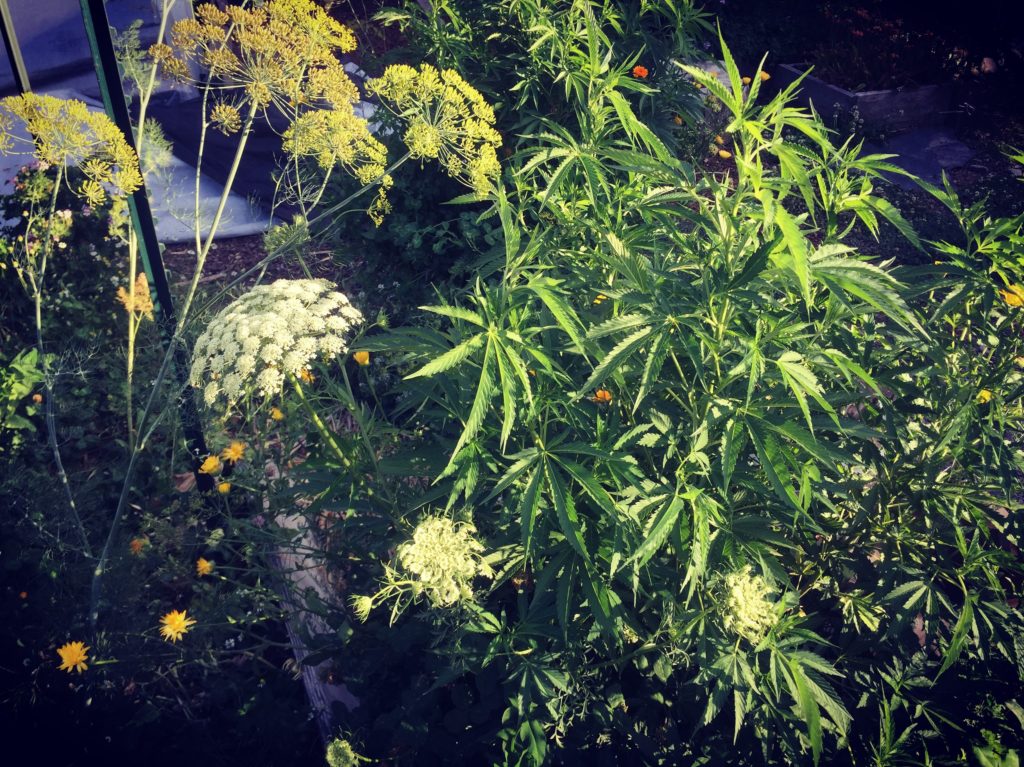

Companion Planting
Companion planting is when two or more plant species are grown in close proximity, typically for the benefit of certain spatial interactions or pest control.
In this article, we are strictly looking at the role of pest control. This application of companion planting can range from attracting beneficial insects (Banker Planting), to trapping the bad ones (Trap Cropping). Many times one plant will perform multiple roles. Gerbera daisies for instance, can become a trap crop for thrips, but then also becomes a banker plant if you introduce pirate bugs. Knowing the relationship of beneficial insects to flowering plants is an important step to proper companion planting.
Beneficial Insects


The goal of companion planting is to attract these beneficial insects into your environment, but there are quite a few different species you can purchase online if need be. Ladybird beetles, green lacewings and pirate bugs are fairly common. Some of the most popular types purchased are predator mites, of which there are quite a few different species (predator mites cannot readily be attracted through companion planting). Many species perform best within their designated range of specific environmental parameters. Photoperiod, temperature and relative humidity are typically the main factors, so it is up to you to perform the due diligence and monitor your environmental conditions to match them within your range. Another important factor is that the beneficial insects can be prey specific, so you need to have some understanding of your pest problem prior to planning. Green lacewings are generalist predators but their larvae are voracious aphid predators; pirate bugs are excellent generalist predators for thrips and spider mites, and certain species of predator mites are excellent controls for spider, broad and russet mites. Whichever species you choose, make sure to have a clear understanding of their role in pest control.
Beneficial Habitats
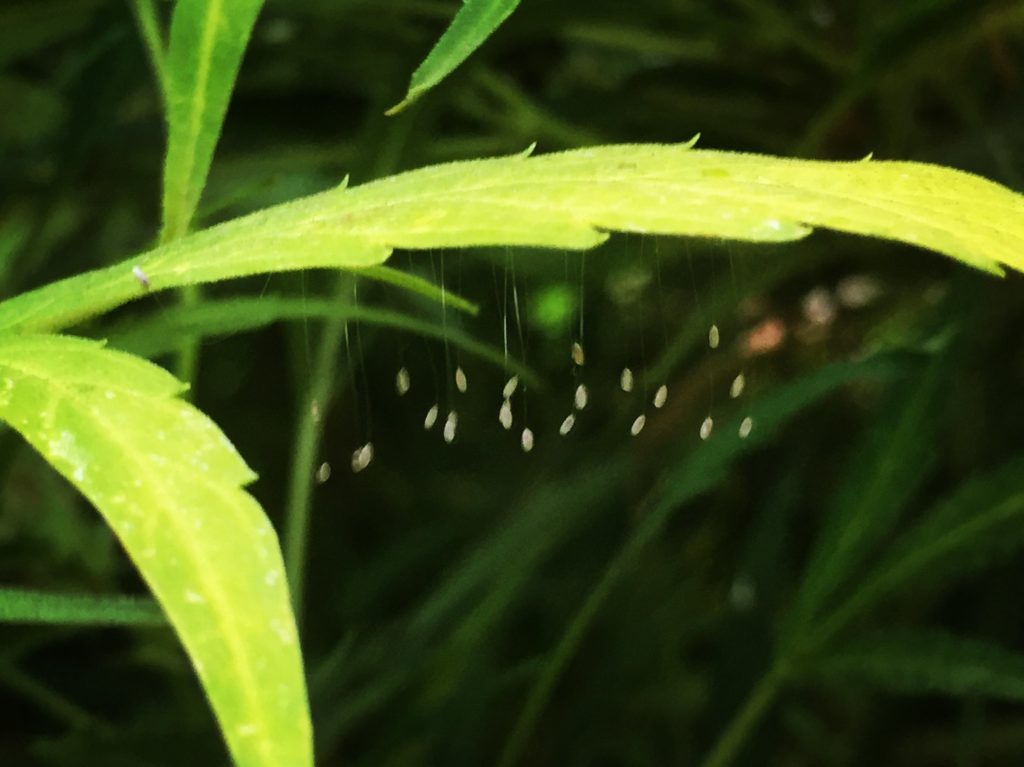

Creating beneficial habitats through companion planting is the name of this game. Increasing the availability of flowers is often the single most important strategy for increasing the abundance and diversity of beneficial insects. Like pollinators, such as bees, many insect predators and parasitoids feed on flower nectar or pollen during one or more of their life stages. Some predatory insects also feed on pollen as a supplemental source of protein—often when prey insects are in short supply or to increase the number of eggs they can lay.
By increasing the availability of flowers, the numbers, longevity, and reproductive potential of beneficial insects is increased. This can be very helpful for farms that often balk at the cost of purchasing some of these predatory species from insectaries. Numerous species of predator mites use pollen as a food source. Amblyseius swirskii, Amblyseius andersoni, Neoseiulus fallacis, Neoseiulus californicus and Galendromus occidentalis have been documented to feed on pollen of flowering plants.
Landscape Management of Beneficial Habitats
As with any operating system, there is maintenance! So it’s a conscious choice the farmer makes with their IPM. Do they want to manage spraying operations, or landscape maintenance operations?
Here are some important questions to mull over:
1. What species of beneficial insects do you want to attract? This will depend on which pest you are trying to control! Next you select the specific predator for your environment. Then you match up a flowering plant for your species. There are a number of lists online, through permaculture guilds, university extensions or scientific journals that can provide this data. The insectaries that sell these beneficial insects can help you learn more about which insect might be most appropriate for your environment.


2. What blends of flowering plants will provide the best succession? Strategic use of cover crop blended seed mixes can also provide successive blooms from March-October. Peaceful Valley’s “good bug blend” cover crop mix contains that full spectrum bloom that is sure to attract many different species of beneficial predators. Large scale commercial agriculture uses purple flash peppers because of their very long flowering period but according to Matthew Gates, an IPM Specialist from southern California, any type of ornamental pepper can also be intercropped to provide a pollen source. From an biodynamic perspective, consider white yarrow, borage, calendula, alyssum, buckwheat, clover, dandelion, aster, nettle, fennel, queen annes lace, marigolds and gerbera daisies, just to name a few!
It should be stressed that native flowering plants should be considered at first due to their innate ability to adapt to local environmental conditions and there be less maintenance to the farmer long term.


3. At what spatial densities do you plant? There really is no magic number as it also depends on your environmental conditions. In general though, you need quite a few flowering plants to really attract a large volume of beneficial insects. IE: In a 10’x20’ space you would want at least roughly 1’ of each outside edge of the bed planted the entire length of the space. Clearly there are many different methods and some commercial greenhouses place single plants every 10’ feet of row space. Small trials for 1000 square feet of mixed greenhouse and outdoor space for cannabis have yielded positive results when 25% of the growing space was occupied with flowering companion plants.
Ultimately you are going to experiment with different plants and learn what works best for your environment. However in order to achieve high numbers of beneficial insects, you’re going to want anywhere from 5%-50% of the square footage of the space dedicated to companion planting. Many times this can be achieved by planting low growing species like calendula, clover or alyssum, again though it depends on which insects you are trying to attract.
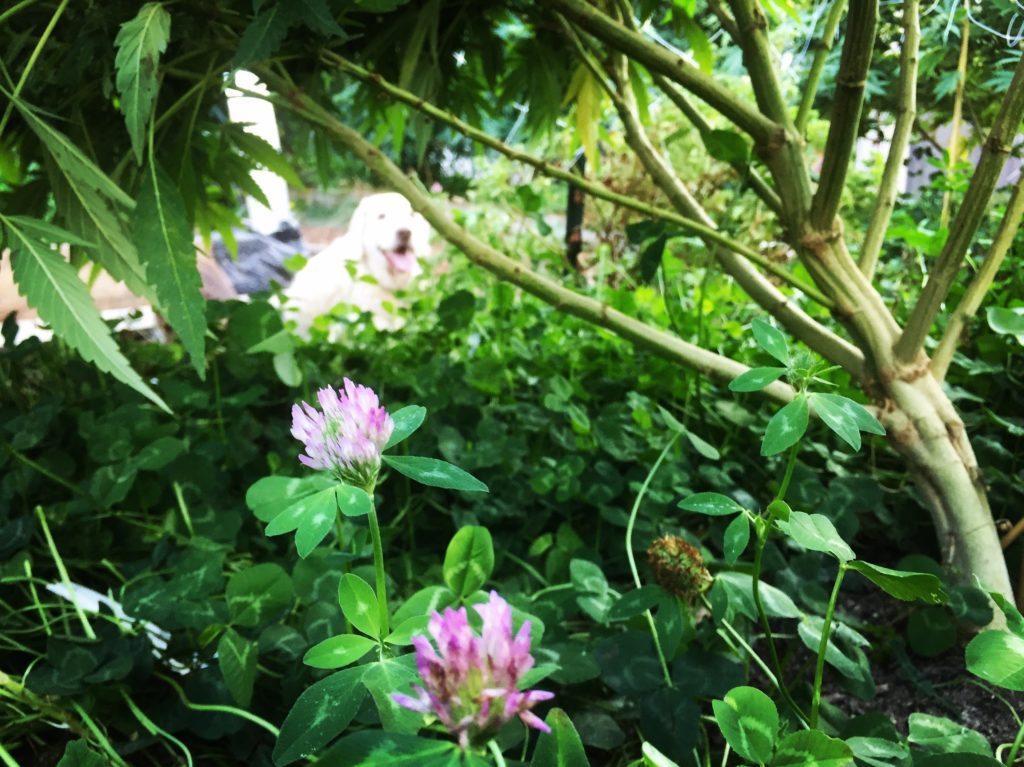

4. What to do when plants are attacked by disease or pest? This is probably the most important caveat emptor for people wishing to dive into companion planting. If you aren’t familiar with the companion plants you’ve added, you might find that it will become a vector for pests or disease if it is sick. This sickness can stem from an imbalance of biochemistry or moisture level in soil. Many times irrigation management to provide proper saturation conditions over the plot can be an important management hurdle to a successful system. Calendula and clover are two good examples of plants that fall victim to these environmental conditions. Calendula and clover can both have problems with powdery mildew and clover can become a trap crop for different types mites, allowing them to multiply their population. The savvy farmer will know how to scout and read overall environmental health. Learning to tolerate minor pest infestations is a must. Ultimately if the plants are too sick, they need to be removed from the environment and properly disposed of or composted.
5. How often to prune back overgrowth? Many species of cover crops or companion plants grow very tall and can crowd out cannabis especially when not planted at an appropriate spatial density or trimmed back properly. Daikon radish shoot upwards of 5 feet tall, vetch will start growing like a vine up cannabis stalks and branches. Suitable management should allot weekly oversight for light work, major trimming/composting projects might happen monthly.
6. How to compost/reuse the greenwaste? The greenwaste from the companion plants can be utilized as a bioavailable nutrient source when properly recycled. Some feed it to animals, some chop and drop (based on canopy density), some make into ferments and some layer into compost or vermicompost. Management techniques will vary based on specific biogeographic conditions.
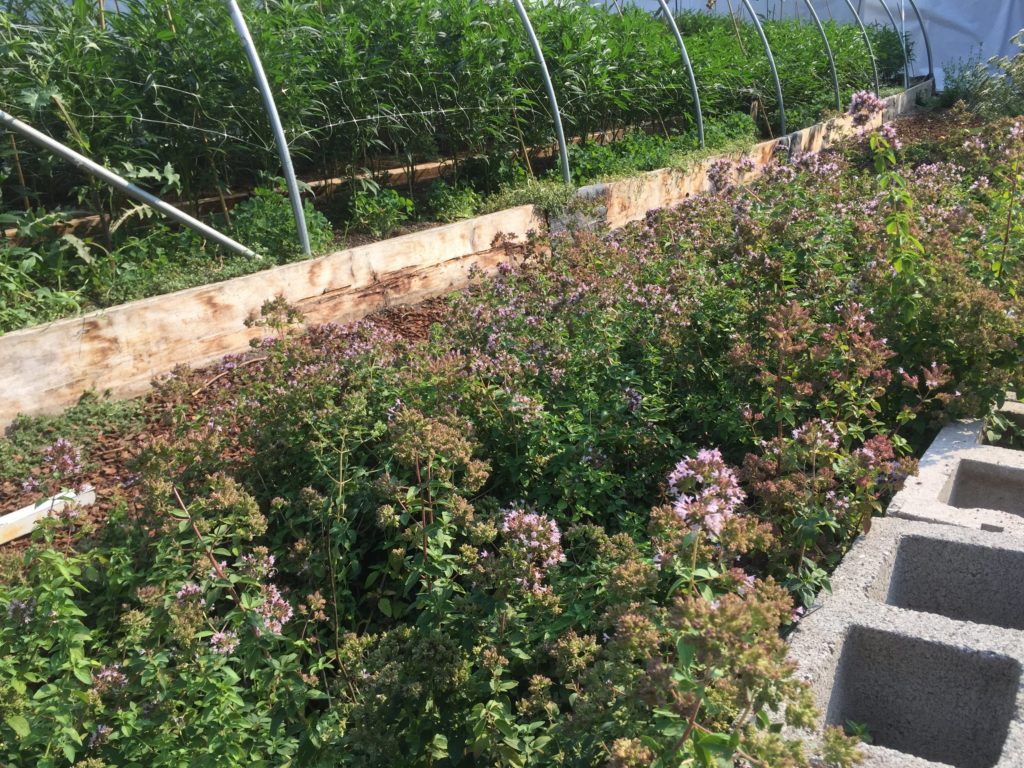

7. How to properly allocate nutrient loading for all plant species? Depending on the species and density of companion plants, you will need to factor in an increased nutrient load throughout the growing season. It is almost impossible to provide a clear estimate based on the complexities of different growing conditions. However, it can be estimated, based on a few trials, that a 5%-25% increase in fertilization may have to occur depending spatial densities and whether you’re in the ground or in container pots. Container pots planted at high spatial densities might require the high range of a 25% increase, while traditional methodologies of direct planting into the ground might only require a 5% increase in fertilizer, or perhaps none at all when planted in the ground on outside borders! Because of so little data existing in this sector of the industry, it will take some trial and error to fine tune this number.
Considerations
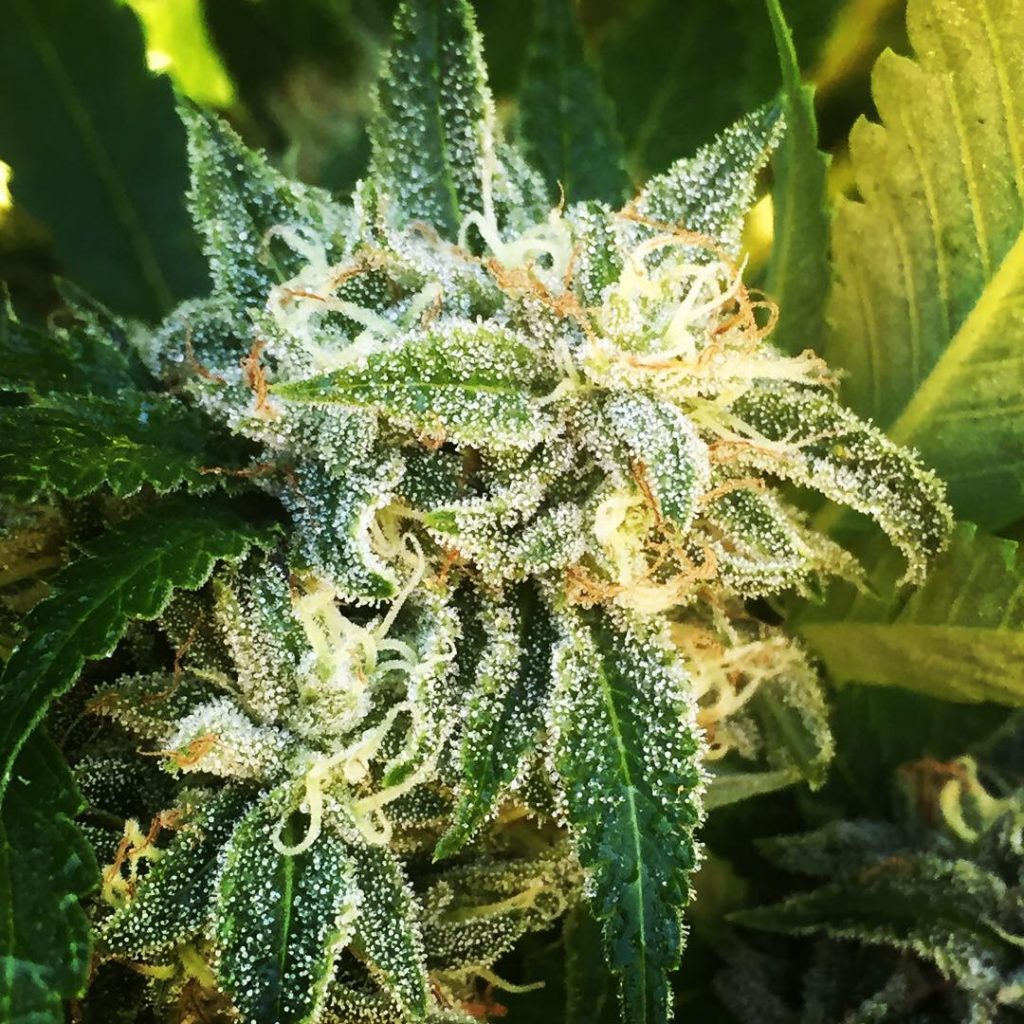

Companion planting at higher spatial densities increases the habitats available for beneficial insects to flourish. Improper management of this polyculture can lead to unintended consequences, such as vetors for pests and disease, which lead to other maintenance costs. These companion planting systems are more easily maintained for the backyard gardener and boutique and cottage industry cannabis with less square footage to manage. Ultimately there are other methodologies one could substitute for companion planting such as purchasing beneficial insects, using organic sprays, and just maintaining proper IPM. When a companion planting system is properly integrated, it provides diverse resources far beyond the scope of what traditional pest management can offer alone. Through mastery of botany, entomology and soil science, one can achieve this biological integration in their environment, which is kind of what the true spirit of cannabis is all about.
Article by:
Russell Pace III – President of the Cannabis Horticultural Association

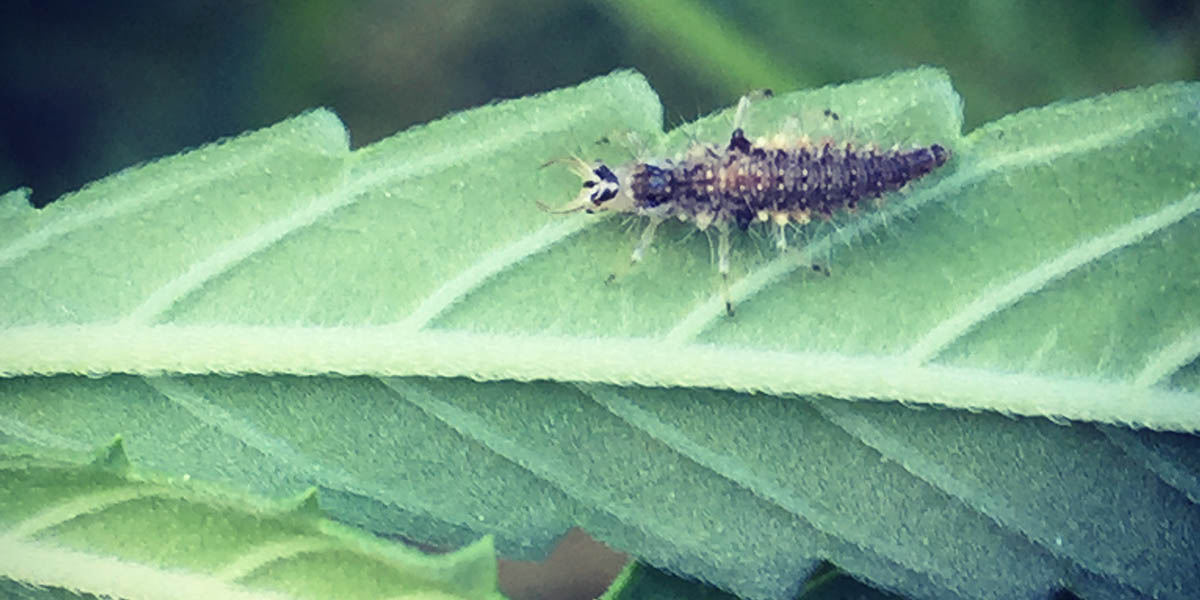

I disagree with giving up finding the best balance of density and bloom successions, water retentions etc for larger acreage.. just buying the insects still means you are not cycling healthy enough and run risk of further breakdowns whether in the soil or yields and can lose in the long run what you are thinking you are saving in maintenance.
I do think you are on to something by looking at native species as the pollinators, nitrogen fixers etc etc and so each companion plant mix of species would be regionally developed..
Also the mosaic of land use policies are showing that proximities to areas that are conserved back to the native prairie, creek watersheds, regenerative management etc actually have increased biodiversity, boosted yields, profits even though less land used for the crops in a season…… What you perceive is a problem of scale is really the solution.
In my research it’s the colour yellow that attract bugs too…I used a Yellow dish with a little plain oil in it,or something a little sticky…check in a few hours,you’ll be surprised…from a Happy Gardener…
I’ve been trying to search everywhere online for what plants are bad companion plants for indoor growing and can’t find anything, only beneficial plants. So are there house plants that are bad companion plants for cannabis? If so what are they?